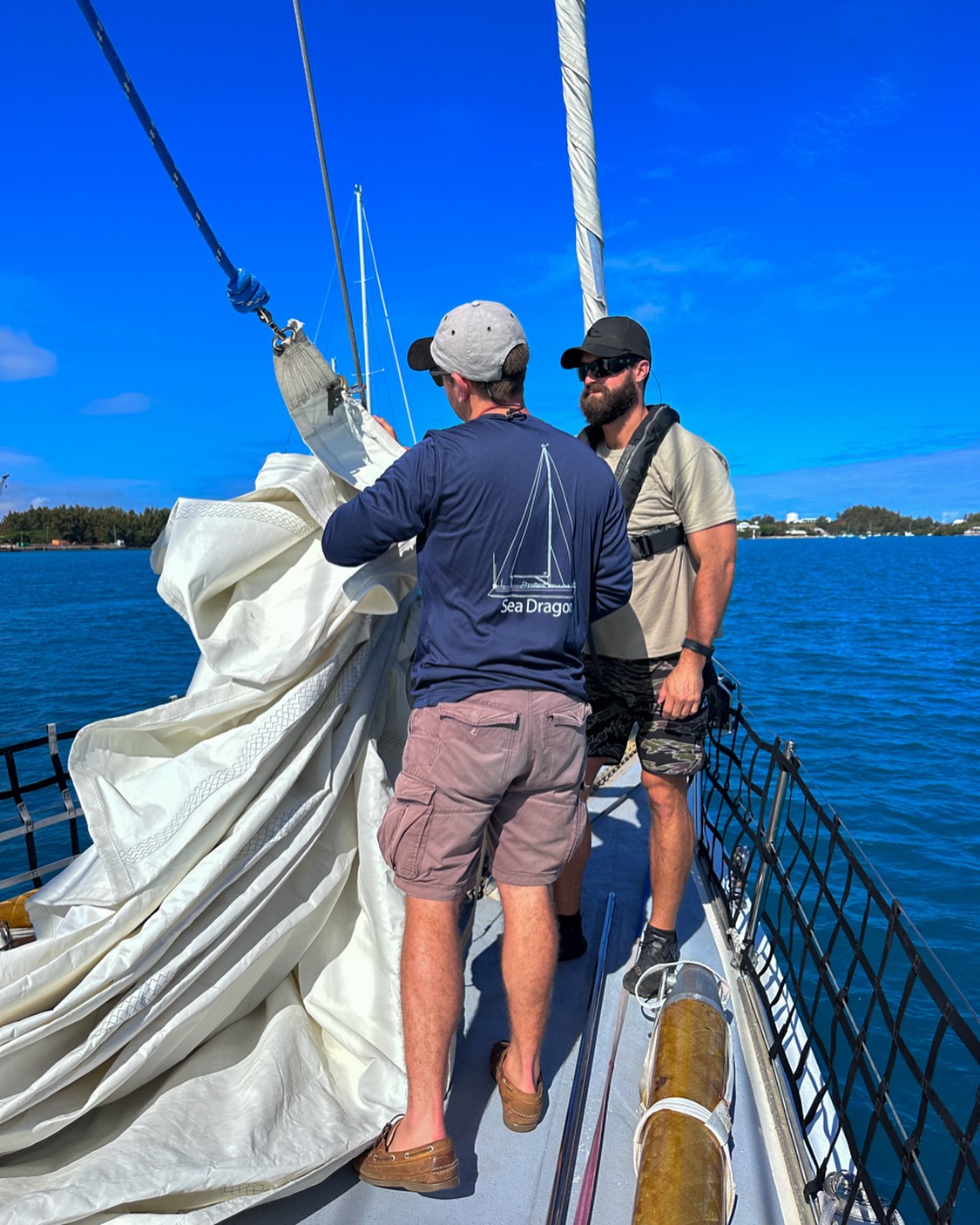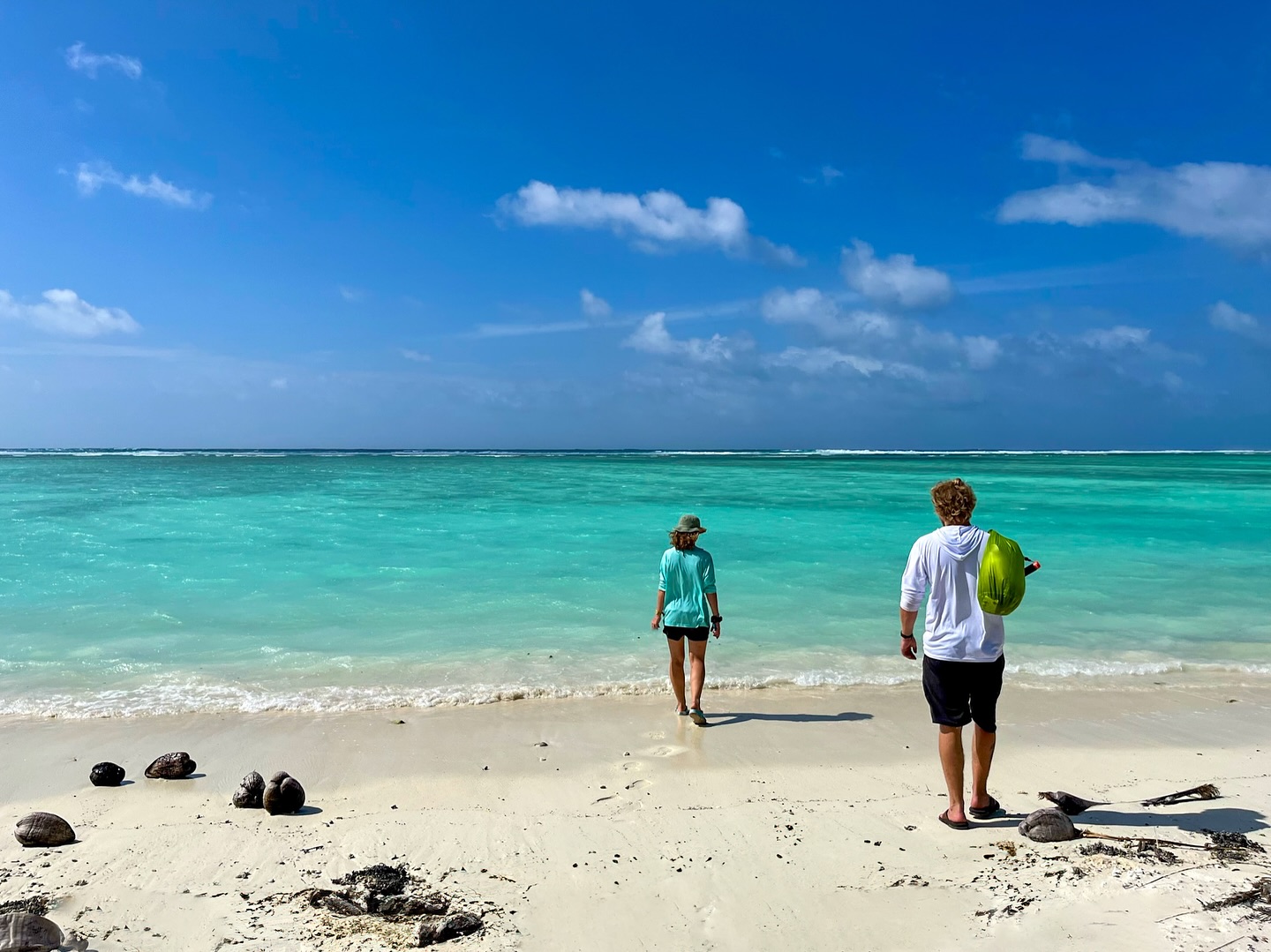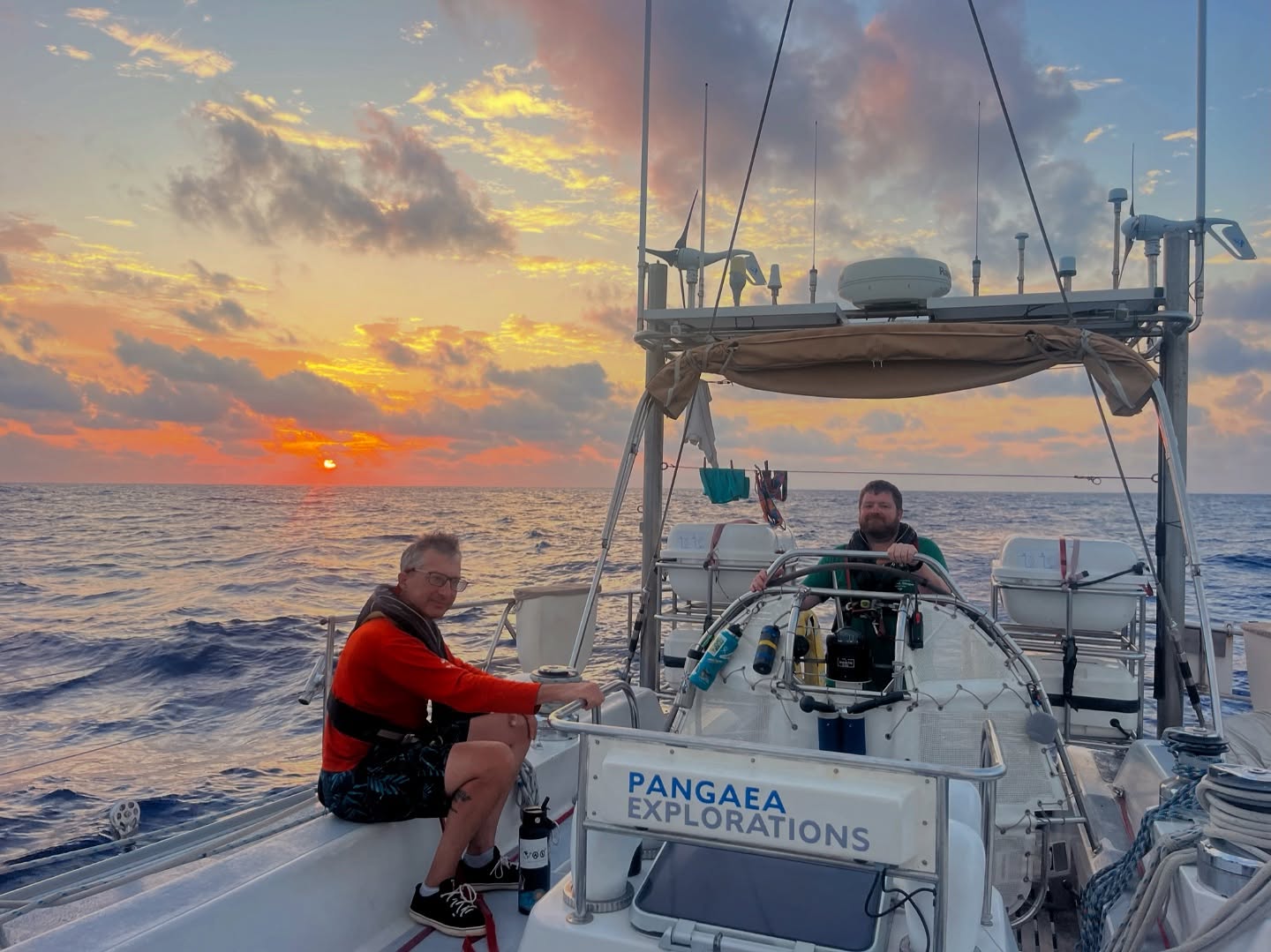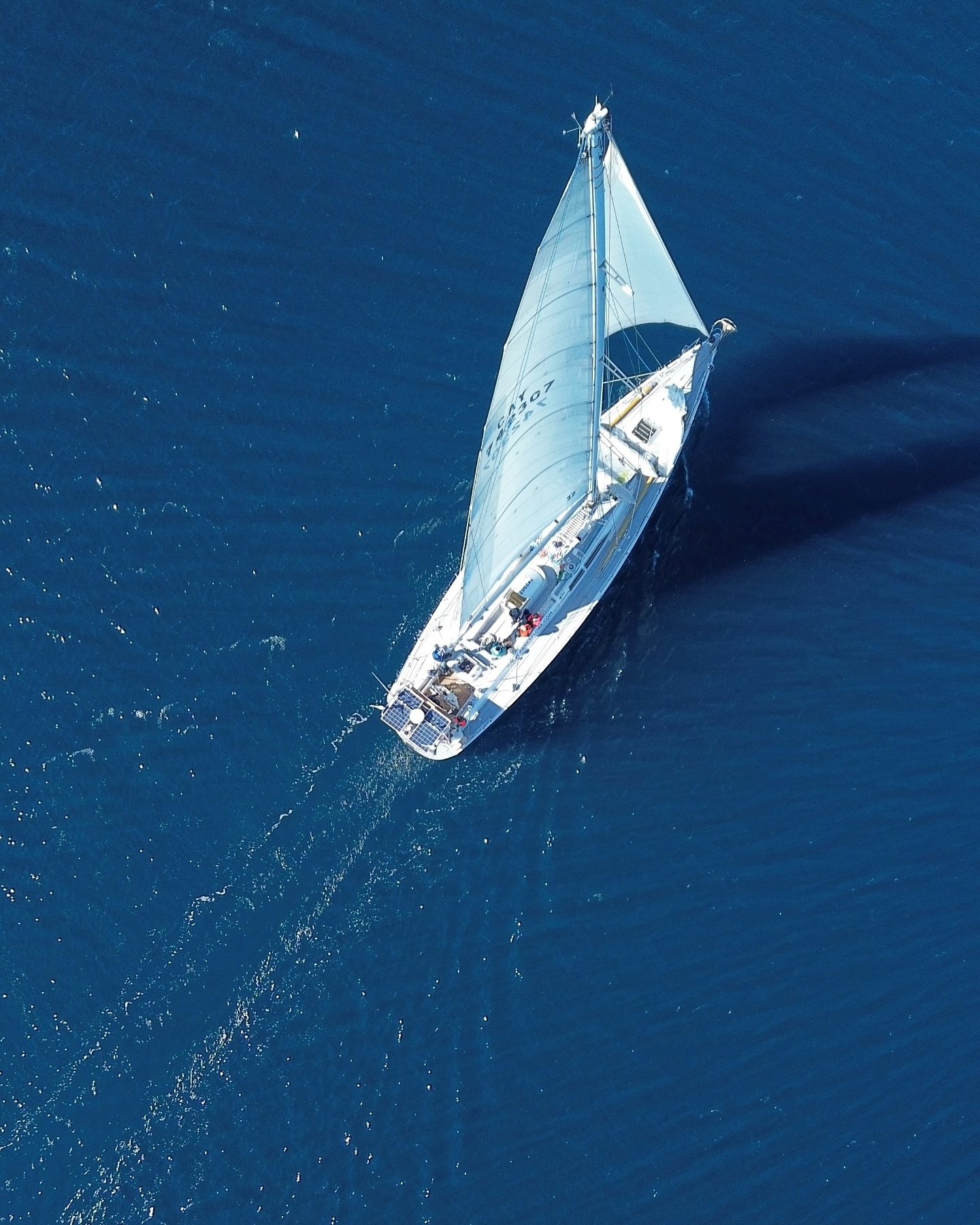My personal love for the ocean is obvious, but working on making the unseen seen to those that might not naturally express the same concern for protecting our oceans is a task that deserves exploring every angle possible. One of those angles that we are working on back home in eastern NC and here as part of eXXpedition is the concept of citizen science.
Citizen science puts collecting data needed for research in the hands of everyday citizens who are not scientists, but have an interest in helping to solve issues that greatly impact their community environment. One of my favorite citizen science tools is the Marine Debris Tracker App. It is available for download on any smart device and provides crucial data for tracking marine debris worldwide. Not only can everyone use it and therefore contribute to the science, its also fun. I use it on a regular basis during beach sweeps, roadside cleanups, and even picking up that blowing bag in the market parking lot. You can even link it to your favorite social media outlet and post what you picked up, map of your debris found (due to the apps ability to track lat and long), and even post a pick from your cleanup. It gets quite competitive amongst the world of trash talkers and beach combers.
On eXXpedition, we are using the Marine Debris Tracker app for a few different projects. In Olinda, Brazil, we held a beach cleanup where we, along with two local non-profits, tracked what we picked up on the beach. We also tracked (as an observation) the debris that floated by the boat while we were anchored in Recife. Thousands of plastic pieces, hundreds of bags and bottles, and several sketchy items like syringes floated past while we were there for a couple of days before setting sail.
While at sea, we are using the Marine Debris Tracker app for observations (we have only found 1 plastic bottle so far), and to track the start and stop of our manta trawl sample collections. We also track other samples collected by recording GPS locations, water temps, wind speeds, and so forth.
Another new citizen science project being tested for the first time is what I like to call the Plastic Ocean Project Percolator. As a member of the Plastic Ocean Project crew, I wanted to collect some extra samples for ongoing efforts to study ocean plastic accumulation while also putting the data collection in the hands of citizens to expand the areas sampled and amount of samples collected. Bonnie Monteleone of UNCW and the Plastic Ocean Project and I put our heads together to come up with a method that might work to not only study plastic accumulation at the surface that is easy for everyone, but also using the same method with a different sample collection technique to capture samples at depth using diver citizen scientists.
If you have ever seen or read about plastic accumulation science, you have noticed that it takes several pieces of equipment just to get the water sample and filter it to see how many of each size of plastic shows up. It is not super high tech equipment for sample collection, but it is not cheap equipment that can be easily found in your local hardware store either. Later after the sample is collected and stored, then it can be sent to analyze in a lab.
So how can a regular Joe or Jane collect ocean plastic samples? We hope we have found a way and I am testing it each day we are at sea to then bring back to Bonnie and her students to analyze in their lab.
Here is the basic Citizen Science Micro-plastic Grab Sample Protocol:
(do not wear fleece or synthetic material while sampling)
Supplies:
Data Sheets (in clipboard)
Sea State guide (download or print from the Beaufort Wind Force Scale website)
GPS for coordinates (you can use the Marine Debris Tracker app for this too)
Pen for data sheets
Watch/Clock
Clean 1 liter bottle and cap (you can use a soda bottle, glass, plastic, or metal)
50 micron brown (unbleached) coffee filters (found in any grocery market)
the inside filter component to a coffee percolator for stability (filter holder) Reuse one from an old broken coffee maker if at all possible
Quart size ziploc bags to store the sample
Permanent marker for labeling bags
Thermometer for getting the water temp
Each time before you sample: rinse the bottle out several times with tap water then cover immediately. Do not open until you are ready to submerge the bottle)
When you are ready:
Fill out as much of the data sheet (contact www.plasticoceanproject.org) or make your own to include date, time, water temp if available, GPS, amount of water in the sample, conditions at sea, depth, and other notes.
Run your arms in the ocean to rinse off any potential plastic fibers that might be there (not necessary obviously if you are at depth).
Submerge the bottle in water to collect the sample. If collecting at depth, I recommend holding onto the hang line, take a look at your depth, slowly open the bottle keeping a tight grip on the cap, let water in, cap it, and store in a mesh debris bag tied to the anchor line while you enjoy a dive, and then collect your debris bag with sample before making your ascent.
Processing the sample:
Find a stable place on the boat to set up your paper 50 micron filter in the hard filter holder. Carefully poor the water through the filter and avoid overflowing. Water passing through the filter does not need to be captured. Try swirling the last bit to get it to pass through. Once content that it is emptied, you can close the filter upon itself flat and place in a quart size zip bag. Use one new zip bag per sample. Mark the bag with the date, sample number, and time. Once you have collected a few samples, contact www.plasticoceanproject.org for instructions on submitting your contribution to citizen science and the study of ocean plastics.
So whether you are cleaning up a river in-land, a beach, a roadside, park, or school, you can record data using the tracker app and water filter samples are encouraged to be collected in any and all bodies of water, both at the surface and at depth.
For more information about this and other citizen science projects, I encourage you to have a good internet search engine session and learn more about how you can contribute to important research being done around the world.
Con mucho amor,
Lisa Rider
































